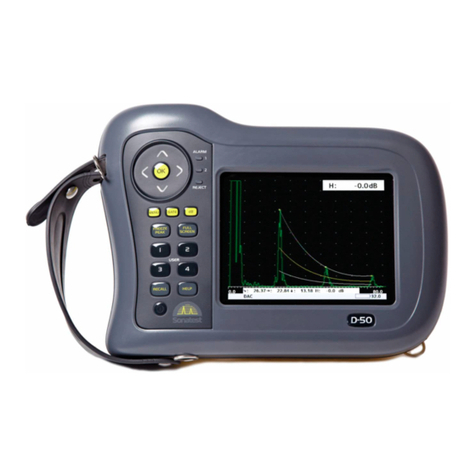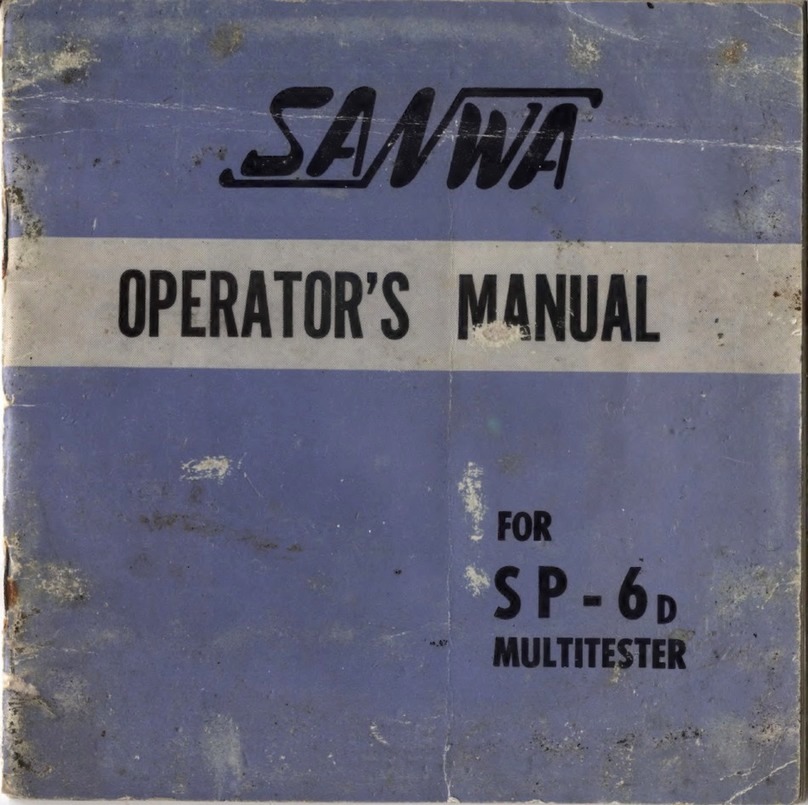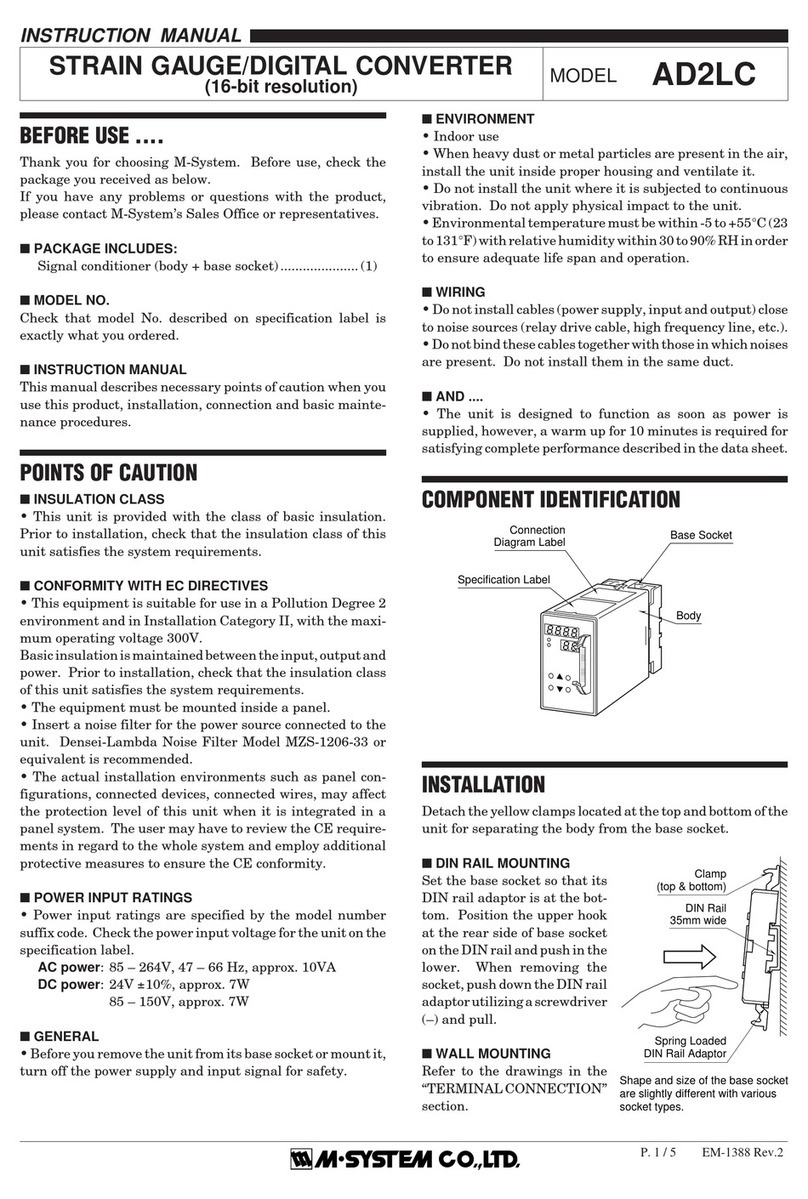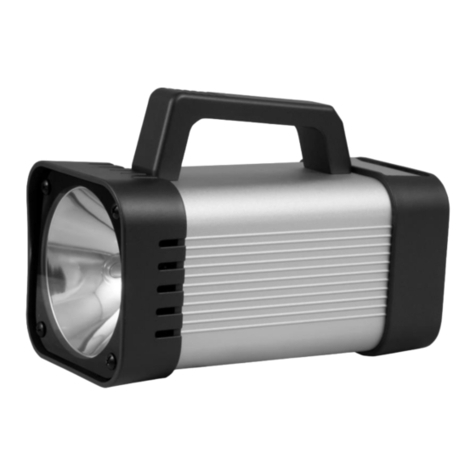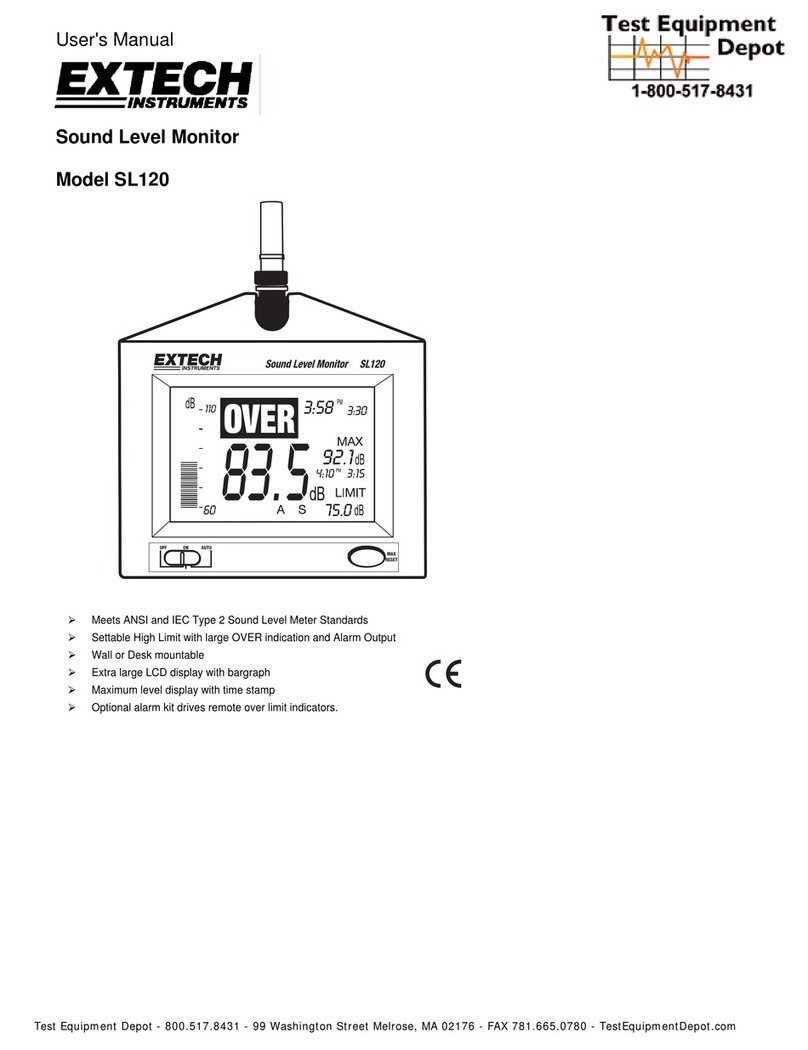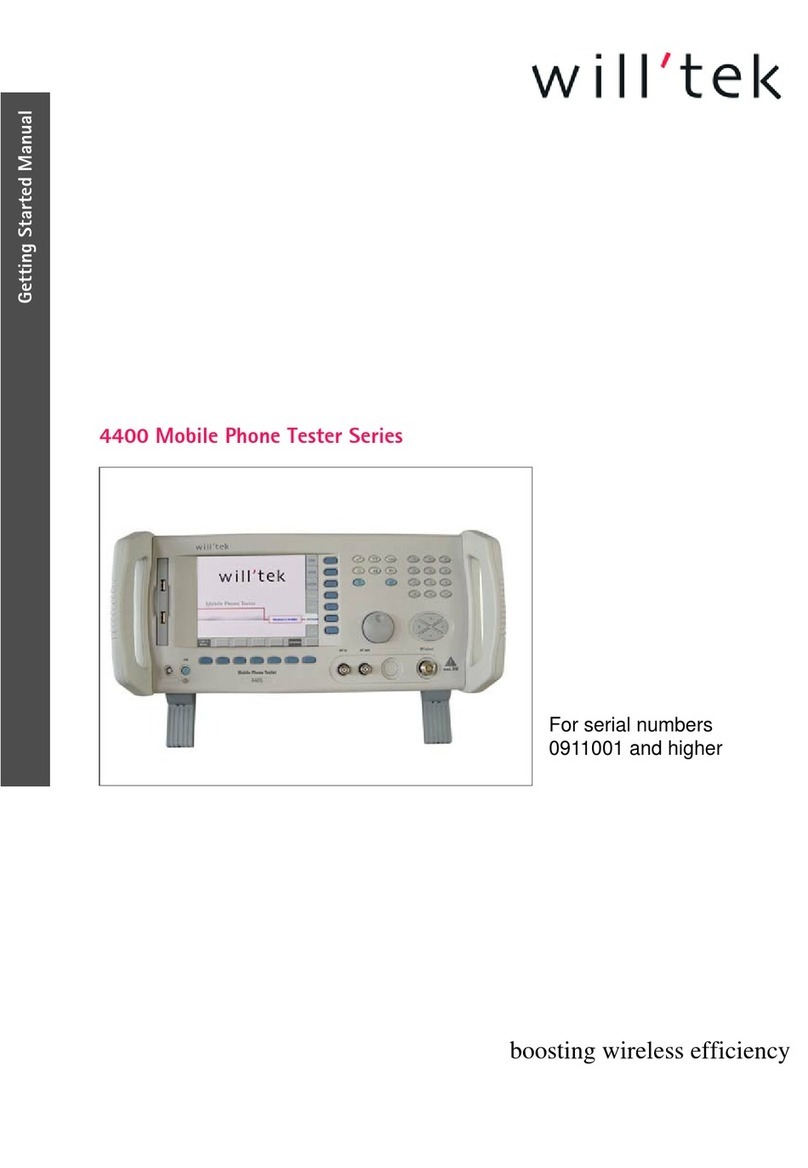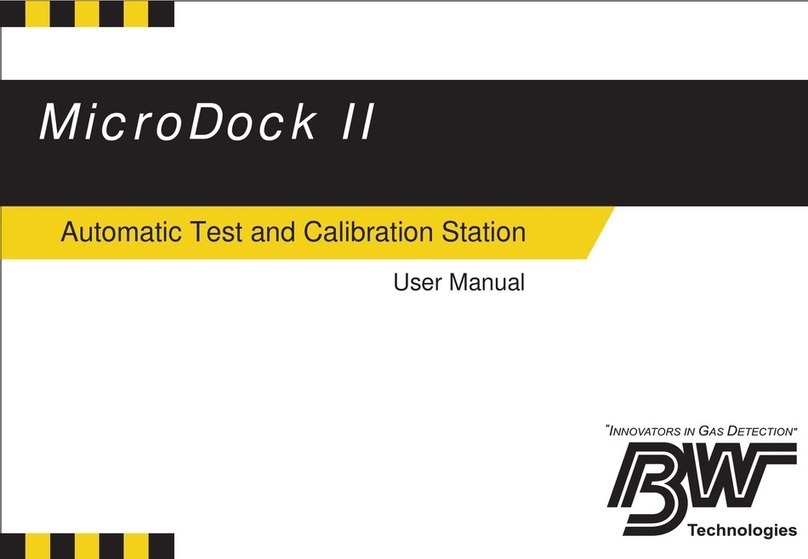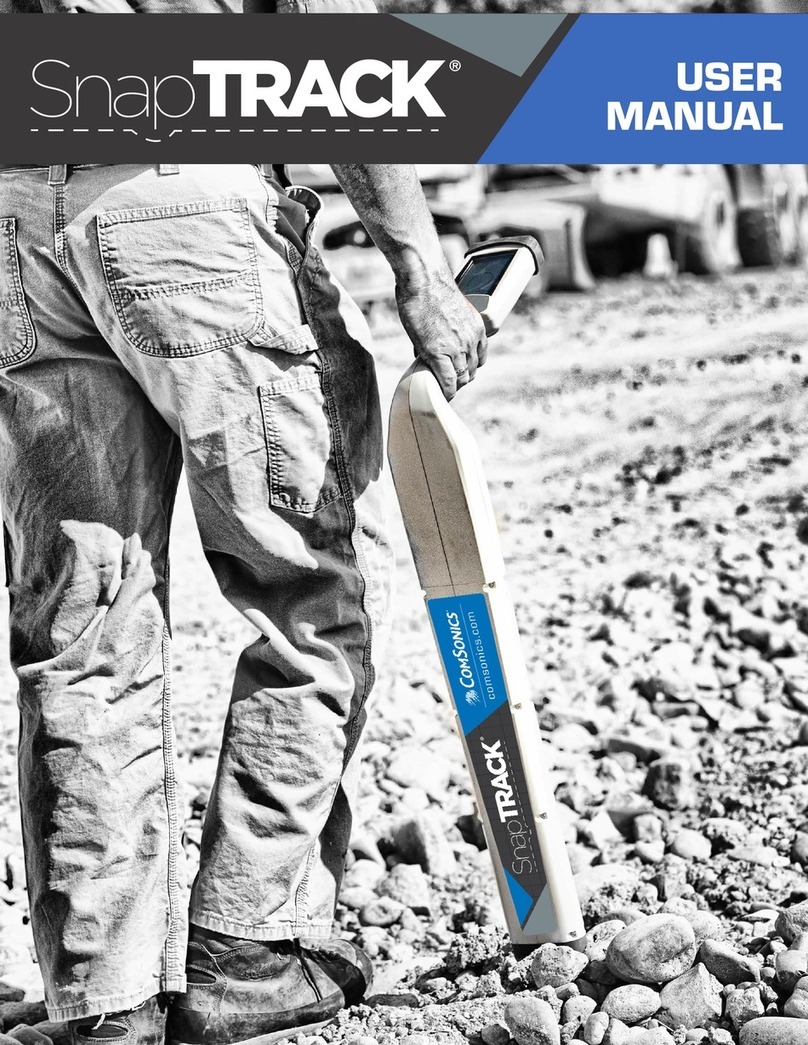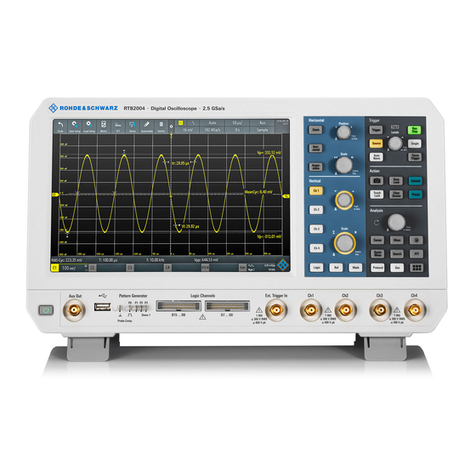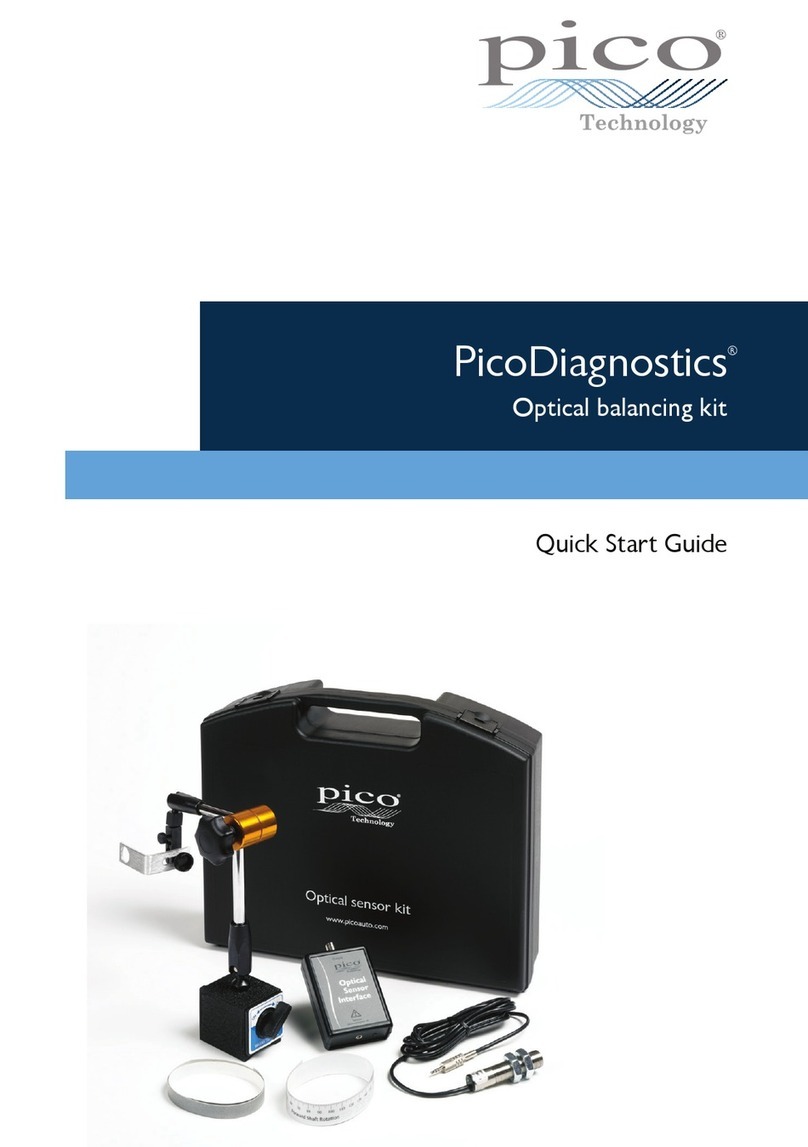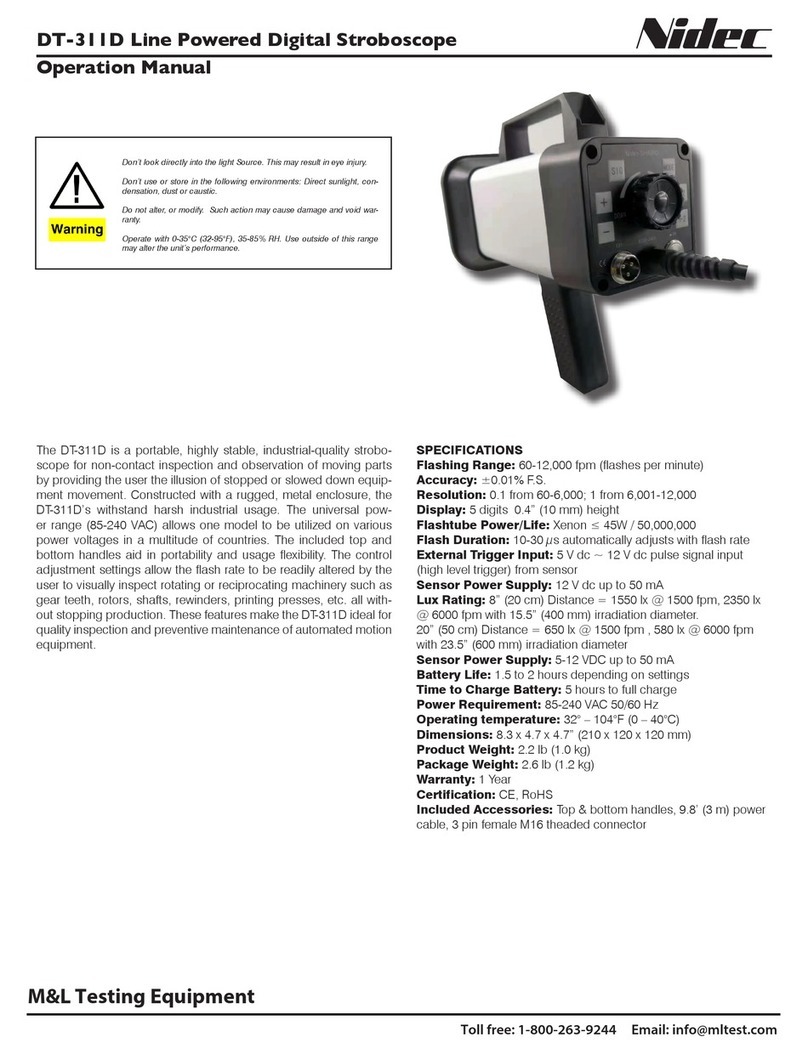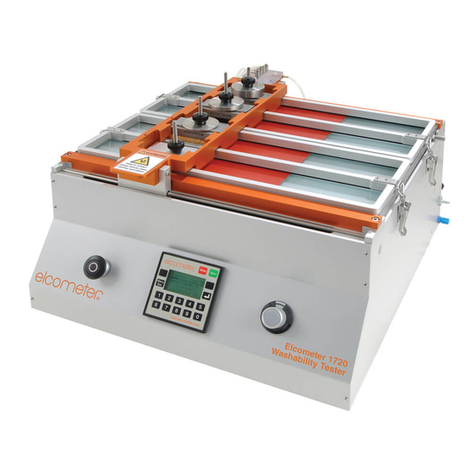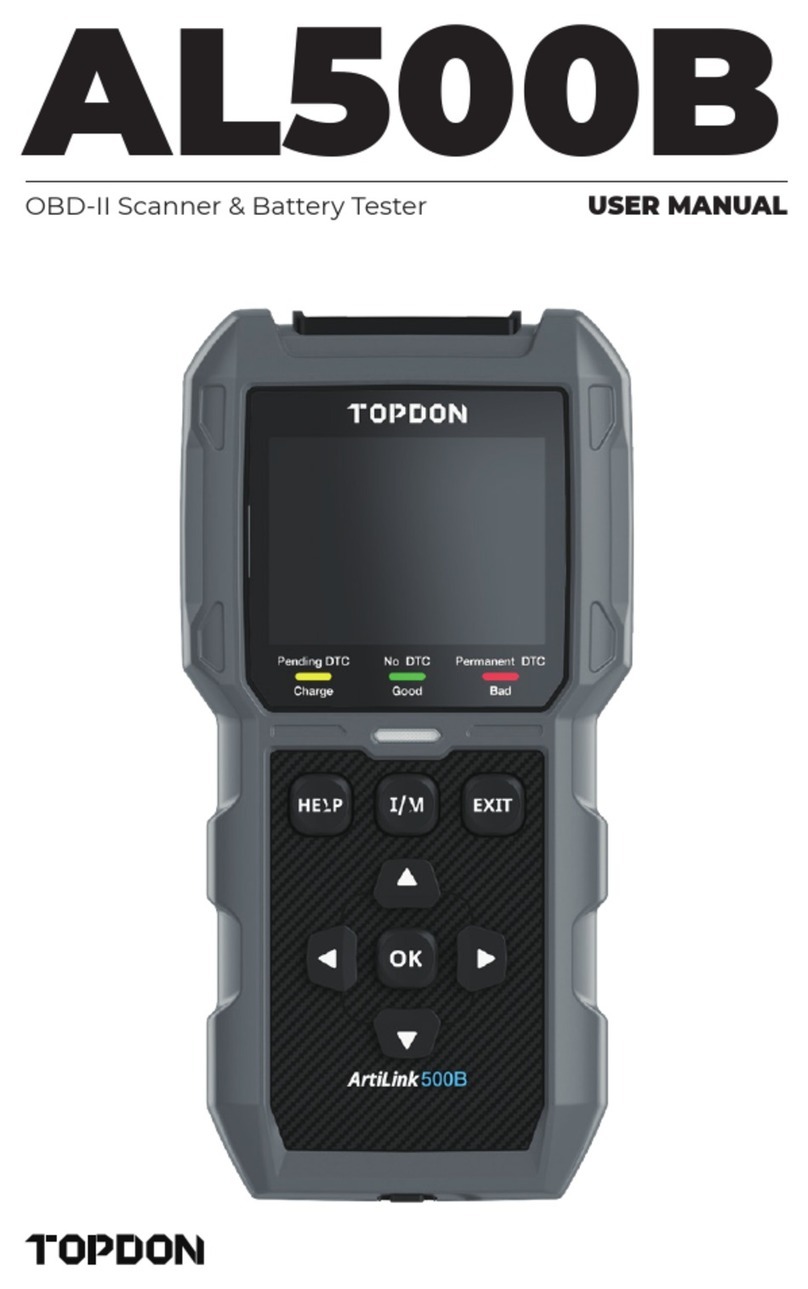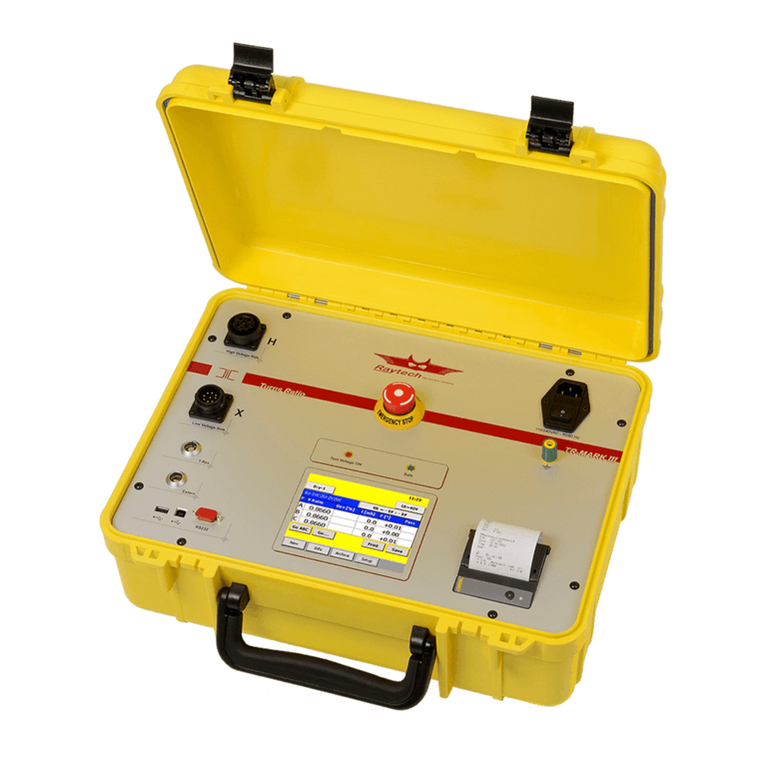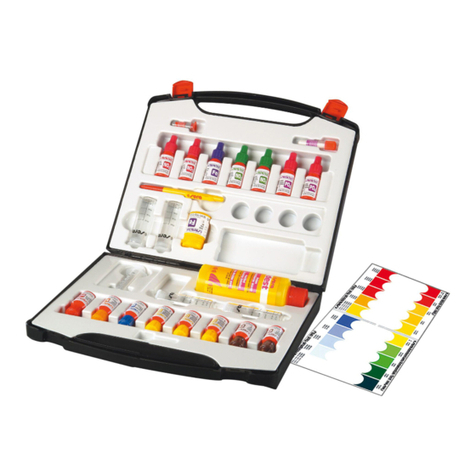SecoRut Wireless ControlCase User manual

Bedienungshandbuch
für
Wireless ControlCase
®
CAN - Bus
Made in Germany
B
+
-
R
++- 9- 9
- 10- 10
R
+
B
OFF
R
+
433 Mhz / AM
Wireless ControlCaseWireless ControlCase
R
+
1
2
456
7
8
C
o
.
n
o
a
t
n
c
t
Trailer 13 pin.
ON
OFF 15V DC
+
Power Charger
Status Test
Akku Panel
15V - 18V
Trailer 7 pin.
Trailer
Contact-no.: Circuit for:
1 Direction indicator light, left
2 Rear fog light
3 GND for contact no.1 - 8
4 Direction indicator light, right
5 Taillight, right
6 Stop lights
7 Taillight, left
8 Reversing light
9 Permanent power supply
10 Power supply ignition switch
11 GND for contact no.10
12 not connected
13 GND for contact no.9
RR
RR
++
BB
- 9- 9
- 10- 10
++
+
-
--
Stromkreis:
Fahrtrichtungsanzeiger, links
Nebelschlußleuchte
Masse für Kontakt Nr.1 - 8
Fahrtrichtungsanzeiger, rechts
Schlußleuchte, rechts
Bremsleuchten
Schlußleuchte, links
Rückfahrleuchte
Stromversorgung, Dauerplus
Stromversorgung, Zündung
Masse für Kontakt Nr.10
nicht belegt
Masse für Kontakt Nr.9
((
))
Transmitter
www.secoruet.net

Herzlichen Glückwunsch zu Ihrer Wahl des Wireless ControlCase.
Mit dem Wireless ControlCase haben wir die Tradition von
fortschritlichen und innovativen Kfz-Prüfgeräte zu entwickeln fortgesetzt.
Der Wireless ControlCase besitzt viele neue und verbesserte
Leistungsmerkmale, die von anderen Geräten nicht erreicht wird, z.B.
- Eigenständige Stromversorgung
- Prüfung von Zugfahrzeug und Hänger
- Signalanzeige analog der Fahrzeughersteller
- Signalanzeige über Funk (Zugfahrzeug)
- Belegungsplan der Anschlusskontakte gem. DIN/ISO
- Einsatzbereiche für 7/13 pol. Fahrzeuge und Hänger
Einleitung
Benutzen Sie Wireless ControlCase erst, wenn Sie diese Anleitung
vollständig durchgelesen haben.
Sollten Sie irgendwelche Fragen haben, so kontaktieren Sie bitte
Ihren Händler, er wird Ihnen gerne weiterhelfen.
Eine unsachgemäße Anwendung kann Schäden an Ihrem Fahrzeug
oder am Wireless ControlCase verursachen!!!
Wireless ControlCase nie bei Regen im Freien verwenden.
Sicherheitshinweis
Anwendung
Wireless ControlCase dient zur Diagnose/Prüfung aller
Steckdosen/Stecker 7/13 pol. im PKW-Bereich.
Eine Diagnose/Prüfung kann auf der Fahrzeugseite und auch für den
Anhänger und Wohnwagen durchgeführt werden.
Haftung
Die gelieferte Hardware und Software stellt den aktuellen
Entwicklungsstand dar. Für die Richtigkeit der gemachten Angaben,
kann keine Gewähr übernommen werden. Wir behalten uns
Änderungen, die dem technischen Fortschritt dienen, bezüglich
Hardware und Software vor. Die Angaben können ohne vorherige
Ankündigung geändert werden. Der Hersteller geht damit keinerlei
Verpflichtungen ein. Der Hersteller hat sich bemüht, einwandfreie
Software und Hardware zu liefern. Er kann aber keine Garantie dafür
übernehmen, dass Hardware und Software unterbrechungs- oder
fehlerfrei laufen und dass die enthaltenen Funktionen in allen möglichen
Kombinationen ausführbar sind. Für die Erreichung eines bestimmten
Verwendungszweckes kann ebenfalls keine Gewähr übernommen
werden. Der Hersteller ist nicht für irgendwelche
Schäden (uneingeschränkt sind Schäden aus entgangenem
Gewinn, Betriebsunterbrechung, Verlust von geschäftlichen
Informationen oder von Daten oder aus anderen finanziellen Verlust)
ersatzpflichtig, die aufgrund der Benutzung der gelieferten
Hardware und Software oder der Unfähigkeit diese zu verwenden
entstehen, selbst wenn der Hersteller von der Möglichkeit eines
Schadens unterrichtet worden ist. Auf jeden Fall ist die Haftung auf
den Betrag beschränkt, der tatsächlich für die Lieferung bezahlt wurde.
Dieser Ausschluss gilt nicht für Schäden, die durch Vorsatz oder
grobe Fahrlässigkeit auf Seiten des Herstellers verursacht wurden.
Ebenfalls bleiben Ansprüche, die auf unabdingbaren gesetzlichen
Vorschriften zur Produkthaftung beruhen, unberührt.

Herzlichen Glückwunsch zu Ihrer Wahl des Wireless ControlCase.
Mit dem Wireless ControlCase haben wir die Tradition von
fortschritlichen und innovativen Kfz-Prüfgeräte zu entwickeln fortgesetzt.
Der Wireless ControlCase besitzt viele neue und verbesserte
Leistungsmerkmale, die von anderen Geräten nicht erreicht wird, z.B.
- Eigenständige Stromversorgung
- Prüfung von Zugfahrzeug und Hänger
- Signalanzeige analog der Fahrzeughersteller
- Signalanzeige über Funk (Zugfahrzeug)
- Belegungsplan der Anschlusskontakte gem. DIN/ISO
- Einsatzbereiche für 7/13 pol. Fahrzeuge und Hänger
Einleitung
Benutzen Sie Wireless ControlCase erst, wenn Sie diese Anleitung
vollständig durchgelesen haben.
Sollten Sie irgendwelche Fragen haben, so kontaktieren Sie bitte
Ihren Händler, er wird Ihnen gerne weiterhelfen.
Eine unsachgemäße Anwendung kann Schäden an Ihrem Fahrzeug
oder am Wireless ControlCase verursachen!!!
Wireless ControlCase nie bei Regen im Freien verwenden.
Sicherheitshinweis
Anwendung
Wireless ControlCase dient zur Diagnose/Prüfung aller
Steckdosen/Stecker 7/13 pol. im PKW-Bereich.
Eine Diagnose/Prüfung kann auf der Fahrzeugseite und auch für den
Anhänger und Wohnwagen durchgeführt werden.
Haftung
Die gelieferte Hardware und Software stellt den aktuellen
Entwicklungsstand dar. Für die Richtigkeit der gemachten Angaben,
kann keine Gewähr übernommen werden. Wir behalten uns
Änderungen, die dem technischen Fortschritt dienen, bezüglich
Hardware und Software vor. Die Angaben können ohne vorherige
Ankündigung geändert werden. Der Hersteller geht damit keinerlei
Verpflichtungen ein. Der Hersteller hat sich bemüht, einwandfreie
Software und Hardware zu liefern. Er kann aber keine Garantie dafür
übernehmen, dass Hardware und Software unterbrechungs- oder
fehlerfrei laufen und dass die enthaltenen Funktionen in allen möglichen
Kombinationen ausführbar sind. Für die Erreichung eines bestimmten
Verwendungszweckes kann ebenfalls keine Gewähr übernommen
werden. Der Hersteller ist nicht für irgendwelche
Schäden (uneingeschränkt sind Schäden aus entgangenem
Gewinn, Betriebsunterbrechung, Verlust von geschäftlichen
Informationen oder von Daten oder aus anderen finanziellen Verlust)
ersatzpflichtig, die aufgrund der Benutzung der gelieferten
Hardware und Software oder der Unfähigkeit diese zu verwenden
entstehen, selbst wenn der Hersteller von der Möglichkeit eines
Schadens unterrichtet worden ist. Auf jeden Fall ist die Haftung auf
den Betrag beschränkt, der tatsächlich für die Lieferung bezahlt wurde.
Dieser Ausschluss gilt nicht für Schäden, die durch Vorsatz oder
grobe Fahrlässigkeit auf Seiten des Herstellers verursacht wurden.
Ebenfalls bleiben Ansprüche, die auf unabdingbaren gesetzlichen
Vorschriften zur Produkthaftung beruhen, unberührt.

CAN - Bus
Made in Germany
B
+
-
R
++- 9- 9
- 10- 10
R
+
B
OFF
R
+
433 Mhz / AM
Wireless ControlCaseWireless ControlCase
R
+
1
2
456
7
8
C
.
o
o
n
n
a
t
t
c
Trailer 13 pin.
ON
OFF 15V DC
+
Power Charger
Status Test
Akku Panel
15V - 18V
Trailer 7 pin.
Trailer
Contact-no.: Circuit for:
1 Direction indicator light, left
2 Rear fog light
3 GND for contact no.1 - 8
4 Direction indicator light, right
5 Taillight, right
6 Stop lights
7 Taillight, left
8 Reversing light
9 Permanent power supply
10 Power supply ignition switch
11 GND for contact no.10
12 not connected
13 GND for contact no.9
RR
RR
++
BB
- 9- 9
- 10- 10
++
+
-
--
Stromkreis:
Fahrtrichtungsanzeiger, links
Nebelschlußleuchte
Masse für Kontakt Nr.1 - 8
Fahrtrichtungsanzeiger, rechts
Schlußleuchte, rechts
Bremsleuchten
Schlußleuchte, links
Rückfahrleuchte
Stromversorgung, Dauerplus
Stromversorgung, Zündung
Masse für Kontakt Nr.10
nicht belegt
Masse für Kontakt Nr.9
((
))
Transmitter
Netzteil
Schalter Ein/Aus-Power
Testknopf (schwarz )für AKKU Kontrolle
Anzeige für Kontrolle Fahrzeug
Anschluss für Anhängerstecker 13 pol.
Bedieneinheit für Anhänger-Kontrolle
Belegungsplan 7 und 13 pol.
Transmitter/Sender für Fahrzeug 7/13 pol.
Ladebuchse für Akku
Anzeige für Kontrolle Anhänger
Anschluss für Anhängerstecker 7 pol.
Fahrzeugseite: 13 pol.
1) Grundsätzlich immer zuerst Transmitter in Steckdose am
Fahrzeug stecken.
2) Setzen Sie sich in das Fahrzeug und aktivieren Sie das
Wireless ControlCase über den Schalter Power,
dann Drehschalter in Position drehen.
Es müssen alle LED’s im Symbol Fahrzeug mahrfach nacheinander
aufleuchten und danach wieder ausgehen. (Selbsttest)
Hinweis:
Sollten nach dem Selbsttest die LED`s 9 + 10 nicht leuchten, ist
kein Dauerplus angeschlossen. Dann die Fahrzeugbeleuchtung
über den gesamten Prüfvorgang eingeschaltet lassen.
3) Nun prüfen Sie durch Bedienen der einzelnen Bedienhebel
im Fahrzeug, z. B. Blinker links, Bremsen, Nebelschlusslicht usw.,
ob die Verkabelung und die Anschlüsse der Dose
richtig durchgeführt wurden.
Bei eventuellen Fehlern sollte nach vorgegebenem
Anschlußplan gem. ISO/DIN die Verkabelung neu
durchgeführt werden.
Prüfablauf
Inbetriebnahme
Vor der Inbetriebnahme sollten Sie darauf achten, dass grundsätzlich
der Akku im Wireless ControlCase voll geladen ist.
Hierzu Testknopf schwarz für AKKU Kontrolle drücken,
im Feld Status leuchtet grüne LED bei voll geladenem Akku.
Sollte die rote LED leuchten, Akku mit Netzteil über
Ladebuchse aufladen.

CAN - Bus
Made in Germany
B
+
-
R
++- 9- 9
- 10- 10
R
+
B
OFF
R
+
433 Mhz / AM
Wireless ControlCaseWireless ControlCase
R
+
1
2
456
7
8
C
.
o
o
n
n
a
t
t
c
Trailer 13 pin.
ON
OFF 15V DC
+
Power Charger
Status Test
Akku Panel
15V - 18V
Trailer 7 pin.
Trailer
Contact-no.: Circuit for:
1 Direction indicator light, left
2 Rear fog light
3 GND for contact no.1 - 8
4 Direction indicator light, right
5 Taillight, right
6 Stop lights
7 Taillight, left
8 Reversing light
9 Permanent power supply
10 Power supply ignition switch
11 GND for contact no.10
12 not connected
13 GND for contact no.9
RR
RR
++
BB
- 9- 9
- 10- 10
++
+
-
--
Stromkreis:
Fahrtrichtungsanzeiger, links
Nebelschlußleuchte
Masse für Kontakt Nr.1 - 8
Fahrtrichtungsanzeiger, rechts
Schlußleuchte, rechts
Bremsleuchten
Schlußleuchte, links
Rückfahrleuchte
Stromversorgung, Dauerplus
Stromversorgung, Zündung
Masse für Kontakt Nr.10
nicht belegt
Masse für Kontakt Nr.9
((
))
Transmitter
Netzteil
Schalter Ein/Aus-Power
Testknopf (schwarz )für AKKU Kontrolle
Anzeige für Kontrolle Fahrzeug
Anschluss für Anhängerstecker 13 pol.
Bedieneinheit für Anhänger-Kontrolle
Belegungsplan 7 und 13 pol.
Transmitter/Sender für Fahrzeug 7/13 pol.
Ladebuchse für Akku
Anzeige für Kontrolle Anhänger
Anschluss für Anhängerstecker 7 pol.
Fahrzeugseite: 13 pol.
1) Grundsätzlich immer zuerst Transmitter in Steckdose am
Fahrzeug stecken.
2) Setzen Sie sich in das Fahrzeug und aktivieren Sie das
Wireless ControlCase über den Schalter Power,
dann Drehschalter in Position drehen.
Es müssen alle LED’s im Symbol Fahrzeug mahrfach nacheinander
aufleuchten und danach wieder ausgehen. (Selbsttest)
Hinweis:
Sollten nach dem Selbsttest die LED`s 9 + 10 nicht leuchten, ist
kein Dauerplus angeschlossen. Dann die Fahrzeugbeleuchtung
über den gesamten Prüfvorgang eingeschaltet lassen.
3) Nun prüfen Sie durch Bedienen der einzelnen Bedienhebel
im Fahrzeug, z. B. Blinker links, Bremsen, Nebelschlusslicht usw.,
ob die Verkabelung und die Anschlüsse der Dose
richtig durchgeführt wurden.
Bei eventuellen Fehlern sollte nach vorgegebenem
Anschlußplan gem. ISO/DIN die Verkabelung neu
durchgeführt werden.
Prüfablauf
Inbetriebnahme
Vor der Inbetriebnahme sollten Sie darauf achten, dass grundsätzlich
der Akku im Wireless ControlCase voll geladen ist.
Hierzu Testknopf schwarz für AKKU Kontrolle drücken,
im Feld Status leuchtet grüne LED bei voll geladenem Akku.
Sollte die rote LED leuchten, Akku mit Netzteil über
Ladebuchse aufladen.

Anhängerseite
1) Stecken Sie den Stecker des Anhängers in die dafür vorhandene
Dose 13 pol. oder 7 pol.
2) Über Schalter Power ON und Drehschalter auf Off wird
Wireless ControlCase aktiviert und der
Prüfablauf kann durchgeführt werden.
3) Jetzt können Sie über den Drehschalter die Beleuchtung am
Hänger/Wohnwagen einschalten und überprüfen.
4) Wenn Hängersymbole im Koffer und Hängerbeleuchtung
übereinstimmen, ist die Verkabelung in Ordnung.
5) Bei eventuellen Fehlern sollte nach vorgegebenem Anschlußplan
gem. ISO/DIN die Verkabelung neu durchgeführt werden.
Prüfablauf
.
Fahrzeugseite: 7 pol.
Grundsätzlich immer zuerst Transmitter in Steckdose am
Fahrzeug stecken.
Vor Aktivieren von Wireless ControlCase sollte grundsätzlich die
Fahrzeugbeleuchtung über den gesamten Prüfvorgang
eingeschaltet bleiben.
Danach Prüfablauf wie bei 13 pol. Dose durchführen.
Wireless ControlCase ist ein hochentwickeltes Präzisionsgerät,
behandeln Sie es dementsprechend.
- Versuchen Sie niemals das Wireless ControlCase
zu öffnen, da sonst dessen Garantie sofort erlischt!!!
- Schützen Sie Wireless ControlCase vor Schlägen, extremer
Hitze und chemischen Verunreinigungen.
- Bewahren Sie Wireless ControlCase an einem trockenen Platz auf,
wenn Sie ihn nicht benutzen.
Pflegehinweise
Wir gewähren dem Ersteigentümer des WCC eine
Garantie von zwei Jahren auf Verarbeitung und Material, bezogen
auf nachfolgend aufgeführte Bedingungen:
Der WCC soll ausschließlich durch den Hersteller
repariert werden. Die Garantie deckt nicht Beschädigungen des
Gerätes durch unsachgemäßen Gebrauch, falsche Pflege, mangelnde
Sorgfalt, Veränderungen oder unautorisierte Reparaturen.
Die Garantie erlischt automatisch bei Missachtung der in der
Bedienungsanleitung aufgeführten Pflegevorschriften.
Bei Geltendmachen eines Garantieanspruchs schicken Sie bitte
den WCC erst nach Absprache, an den Hersteller.
Geben Sie Ihre genaue Adresse an und legen Sie eine
Rechnungskopie, sowie eine kurze Fehlerbeschreibung bei.
Denken Sie bitte daran, dass „unfreie“ Sendungen nicht
angenommen werden! Ihre Reklamation wird umgehend bearbeitet,
vorausgesetzt alle erforderlichen Ersatzteile sind vorhanden.
Alle durchgeführten Reparaturen, die nicht in unter die Garantie fallen,
gehen zu Lasten des Kunden.
Sämtliche Garantieleistungen, eingeschlossen der Garantie der
Verkäuflichkeit und Eignung des WCC für einen
bestimmten Einsatzzweck, beginnen am Tag des Produktkaufes und
unterliegen den Garantiebedingungen.
Wir können nicht für die Ausfallzeit des Gerätes oder andere
entstehende Kosten haftbar gemacht werden.
WCC = Wireless ControlCase
Garantie

Anhängerseite
1) Stecken Sie den Stecker des Anhängers in die dafür vorhandene
Dose 13 pol. oder 7 pol.
2) Über Schalter Power ON und Drehschalter auf Off wird
Wireless ControlCase aktiviert und der
Prüfablauf kann durchgeführt werden.
3) Jetzt können Sie über den Drehschalter die Beleuchtung am
Hänger/Wohnwagen einschalten und überprüfen.
4) Wenn Hängersymbole im Koffer und Hängerbeleuchtung
übereinstimmen, ist die Verkabelung in Ordnung.
5) Bei eventuellen Fehlern sollte nach vorgegebenem Anschlußplan
gem. ISO/DIN die Verkabelung neu durchgeführt werden.
Prüfablauf
.
Fahrzeugseite: 7 pol.
Grundsätzlich immer zuerst Transmitter in Steckdose am
Fahrzeug stecken.
Vor Aktivieren von Wireless ControlCase sollte grundsätzlich die
Fahrzeugbeleuchtung über den gesamten Prüfvorgang
eingeschaltet bleiben.
Danach Prüfablauf wie bei 13 pol. Dose durchführen.
Wireless ControlCase ist ein hochentwickeltes Präzisionsgerät,
behandeln Sie es dementsprechend.
- Versuchen Sie niemals das Wireless ControlCase
zu öffnen, da sonst dessen Garantie sofort erlischt!!!
- Schützen Sie Wireless ControlCase vor Schlägen, extremer
Hitze und chemischen Verunreinigungen.
- Bewahren Sie Wireless ControlCase an einem trockenen Platz auf,
wenn Sie ihn nicht benutzen.
Pflegehinweise
Wir gewähren dem Ersteigentümer des WCC eine
Garantie von zwei Jahren auf Verarbeitung und Material, bezogen
auf nachfolgend aufgeführte Bedingungen:
Der WCC soll ausschließlich durch den Hersteller
repariert werden. Die Garantie deckt nicht Beschädigungen des
Gerätes durch unsachgemäßen Gebrauch, falsche Pflege, mangelnde
Sorgfalt, Veränderungen oder unautorisierte Reparaturen.
Die Garantie erlischt automatisch bei Missachtung der in der
Bedienungsanleitung aufgeführten Pflegevorschriften.
Bei Geltendmachen eines Garantieanspruchs schicken Sie bitte
den WCC erst nach Absprache, an den Hersteller.
Geben Sie Ihre genaue Adresse an und legen Sie eine
Rechnungskopie, sowie eine kurze Fehlerbeschreibung bei.
Denken Sie bitte daran, dass „unfreie“ Sendungen nicht
angenommen werden! Ihre Reklamation wird umgehend bearbeitet,
vorausgesetzt alle erforderlichen Ersatzteile sind vorhanden.
Alle durchgeführten Reparaturen, die nicht in unter die Garantie fallen,
gehen zu Lasten des Kunden.
Sämtliche Garantieleistungen, eingeschlossen der Garantie der
Verkäuflichkeit und Eignung des WCC für einen
bestimmten Einsatzzweck, beginnen am Tag des Produktkaufes und
unterliegen den Garantiebedingungen.
Wir können nicht für die Ausfallzeit des Gerätes oder andere
entstehende Kosten haftbar gemacht werden.
WCC = Wireless ControlCase
Garantie

EG-KONFORMITÄTSERKLÄRUNG
gemäß EG-Richtlinie 89/336/EWG über die
elektromagnetische Verträglichkeit
veröffentlicht im "Amtsblatt der Europäischen Gemeinschaft"
(AB1. Nr. L 139 vom 23.5.1989, S. 19)
Hiermit erklären wir, dass das nachfolgend bezeichnete Gerät aufgrund
seiner Konzeption und Bauart sowie in der von uns in Verkehr
gebrachten Ausführung den unten aufgelisteten Normen entspricht.
Gerätetyp: Wireless ControlCase
Gerätebeschreibung: KFZ - Diagnosegerät
Funkmodul: 433,92 Mhz CE – konform nach EN 300 220 - 3
Netzteil:
Die oben genannte Baugruppe entspricht den
folgenden Fachgrundnormen:
Fachgrundnorm zur Störaussendung EN 50 081, Teil 1
Fachgrundnorm zur Störfestigkeit EN 50 082, Teil 2
Oktober 2007
Diese Erklärung bescheinigt die Übereinstimmung mit den genannten
Richtlinien, beinhaltet jedoch keine Zusicherung von Eigenschaften.
Input: 220V ~ / 50 Hz / 18,5 VA
Output: 15V ~ / 1,24 A / 25VA
CE + GS geprüft
Made in Germany
CE Erklärung
11-07
User Manual for
Wireless ControlCase
®
CAN - Bus
Made in Germany
B
+
-
R
++- 9- 9
- 10- 10
R
+
B
OFF
R
+
433 Mhz / AM
Wireless ControlCaseWireless ControlCase
R
+
1
2
456
7
8
C
o
.
n
o
a
t
n
c
t
Trailer 13 pin.
ON
OFF 15V DC
+
Power Charger
Status Test
Akku Panel
15V - 18V
Trailer 7 pin.
Trailer
Contact-no.: Circuit for:
1 Direction indicator light, left
2 Rear fog light
3 GND for contact no.1 - 8
4 Direction indicator light, right
5 Taillight, right
6 Stop lights
7 Taillight, left
8 Reversing light
9 Permanent power supply
10 Power supply ignition switch
11 GND for contact no.10
12 not connected
13 GND for contact no.9
RR
RR
++
BB
- 9- 9
- 10- 10
++
+
-
--
Stromkreis:
Fahrtrichtungsanzeiger, links
Nebelschlußleuchte
Masse für Kontakt Nr.1 - 8
Fahrtrichtungsanzeiger, rechts
Schlußleuchte, rechts
Bremsleuchten
Schlußleuchte, links
Rückfahrleuchte
Stromversorgung, Dauerplus
Stromversorgung, Zündung
Masse für Kontakt Nr.10
nicht belegt
Masse für Kontakt Nr.9
((
))
Transmitter
www.secoruet.net

EG-KONFORMITÄTSERKLÄRUNG
gemäß EG-Richtlinie 89/336/EWG über die
elektromagnetische Verträglichkeit
veröffentlicht im "Amtsblatt der Europäischen Gemeinschaft"
(AB1. Nr. L 139 vom 23.5.1989, S. 19)
Hiermit erklären wir, dass das nachfolgend bezeichnete Gerät aufgrund
seiner Konzeption und Bauart sowie in der von uns in Verkehr
gebrachten Ausführung den unten aufgelisteten Normen entspricht.
Gerätetyp: Wireless ControlCase
Gerätebeschreibung: KFZ - Diagnosegerät
Funkmodul: 433,92 Mhz CE – konform nach EN 300 220 - 3
Netzteil:
Die oben genannte Baugruppe entspricht den
folgenden Fachgrundnormen:
Fachgrundnorm zur Störaussendung EN 50 081, Teil 1
Fachgrundnorm zur Störfestigkeit EN 50 082, Teil 2
Oktober 2007
Diese Erklärung bescheinigt die Übereinstimmung mit den genannten
Richtlinien, beinhaltet jedoch keine Zusicherung von Eigenschaften.
Input: 220V ~ / 50 Hz / 18,5 VA
Output: 15V ~ / 1,24 A / 25VA
CE + GS geprüft
Made in Germany
CE Erklärung
11-07
User Manual for
Wireless ControlCase
®
CAN - Bus
Made in Germany
B
+
-
R
++- 9- 9
- 10- 10
R
+
B
OFF
R
+
433 Mhz / AM
Wireless ControlCaseWireless ControlCase
R
+
1
2
456
7
8
C
o
.
n
o
a
t
n
c
t
Trailer 13 pin.
ON
OFF 15V DC
+
Power Charger
Status Test
Akku Panel
15V - 18V
Trailer 7 pin.
Trailer
Contact-no.: Circuit for:
1 Direction indicator light, left
2 Rear fog light
3 GND for contact no.1 - 8
4 Direction indicator light, right
5 Taillight, right
6 Stop lights
7 Taillight, left
8 Reversing light
9 Permanent power supply
10 Power supply ignition switch
11 GND for contact no.10
12 not connected
13 GND for contact no.9
RR
RR
++
BB
- 9- 9
- 10- 10
++
+
-
--
Stromkreis:
Fahrtrichtungsanzeiger, links
Nebelschlußleuchte
Masse für Kontakt Nr.1 - 8
Fahrtrichtungsanzeiger, rechts
Schlußleuchte, rechts
Bremsleuchten
Schlußleuchte, links
Rückfahrleuchte
Stromversorgung, Dauerplus
Stromversorgung, Zündung
Masse für Kontakt Nr.10
nicht belegt
Masse für Kontakt Nr.9
((
))
Transmitter
www.secoruet.net

Congratulations on choosing the Wireless ControlCase.
With the Wireless ControlCase we have continued the tradition
of developing advanced and innovative vehicle testing equipment.
The Wireless ControlCase has many new and improved features t
hat distinguish it from other devices, e.g.
- is self-powered
- testing of towing vehicle and trailer
- signal display according to vehicle manufacturer
- radio signal display (towing vehicle)
- assignment plan of connecting contacts according to DIN/ISO
- scope of application includes 7-13 pin vehicles and trailers
Introduction
Please read this manual carefully before using the Wireless ControlCase
.
If you have any questions, please contact your dealer who will be
pleased to help you.
Improper use may damage your vehicle or the Wireless ControlCase!
Do not expose the Wireless ControlCase to rain
Safety instructions
USE
The Wireless ControlCase is used for diagnosing/testing
all 7-13 pin sockets/plugs in the vehicle field.
A diagnosis/test can be carried out for the vehicle as well as for the
trailer and caravan.
Liability
The hardware and software provided correspond to the current state
of development. We cannot guarantee the accuracy of the information
provided. We reserve the right to make changes of the
hardware and software that serve technical progress.
The information is subject to change without notice. Therefore,
the manufacturer does not assume any liability. The manufacturer
has made efforts to supply software and hardware in perfect condition.
However, the manufacturer cannot guarantee that the
hardware and software run without interruption or are free from
defects and that the functions contained can be run in all possible
combinations. We also cannot guarantee that the intended use is
achieved. The manufacturer is not liable for any damage
(damage resulting from loss of profit, interruption of business,
loss of business information or data or from other financial loss
is not limited) resulting from the use of the hardware and software
provided or the inability to use it, even if the manufacturer has been
notified of the possibility of damage. In any case, liability is limited to
the amount actually paid for the supply. This exclusion does not apply
to damage caused by intent or gross negligence on the part of the
manufacturer. It also does not apply to claims based on mandatory
legal provisions on product liability.

Congratulations on choosing the Wireless ControlCase.
With the Wireless ControlCase we have continued the tradition
of developing advanced and innovative vehicle testing equipment.
The Wireless ControlCase has many new and improved features t
hat distinguish it from other devices, e.g.
- is self-powered
- testing of towing vehicle and trailer
- signal display according to vehicle manufacturer
- radio signal display (towing vehicle)
- assignment plan of connecting contacts according to DIN/ISO
- scope of application includes 7-13 pin vehicles and trailers
Introduction
Please read this manual carefully before using the Wireless ControlCase
.
If you have any questions, please contact your dealer who will be
pleased to help you.
Improper use may damage your vehicle or the Wireless ControlCase!
Do not expose the Wireless ControlCase to rain
Safety instructions
USE
The Wireless ControlCase is used for diagnosing/testing
all 7-13 pin sockets/plugs in the vehicle field.
A diagnosis/test can be carried out for the vehicle as well as for the
trailer and caravan.
Liability
The hardware and software provided correspond to the current state
of development. We cannot guarantee the accuracy of the information
provided. We reserve the right to make changes of the
hardware and software that serve technical progress.
The information is subject to change without notice. Therefore,
the manufacturer does not assume any liability. The manufacturer
has made efforts to supply software and hardware in perfect condition.
However, the manufacturer cannot guarantee that the
hardware and software run without interruption or are free from
defects and that the functions contained can be run in all possible
combinations. We also cannot guarantee that the intended use is
achieved. The manufacturer is not liable for any damage
(damage resulting from loss of profit, interruption of business,
loss of business information or data or from other financial loss
is not limited) resulting from the use of the hardware and software
provided or the inability to use it, even if the manufacturer has been
notified of the possibility of damage. In any case, liability is limited to
the amount actually paid for the supply. This exclusion does not apply
to damage caused by intent or gross negligence on the part of the
manufacturer. It also does not apply to claims based on mandatory
legal provisions on product liability.

Trailer
1.Put the plug of the trailer into the 13 pin or 7 pin socket provided
for this purpose.
2. Activate the Wireless ControlCase by pressing the
Power ON switch and turning the rotary switch to .
Then, the testing procedure can be carried out.
3. Now, you can switch on and test the trailer/caravan lighting by
turning the rotary switch.
4. If the trailer symbols in the case correspond to the trailer
lighting, cabling is correct.
5. In case of errors, cabling should be installed again according
to the assignment plan provided in accordance with ISO/DIN.
Testing procedure
Vehicle: 7 pin
First always plug the transmitter into the socket of the vehicle.
The vehicle lighting should always be left switched on during
the whole testing process before activating the Wireless ControlCase.
Then, carry out the testing procedure according to 13 pin socket.
Wireless ControlCase is an advanced precision device.
Use it accordingly.
- Do not try to open the Wireless ControlCase, as this will
immediately void the warranty!
- Protect the Wireless ControlCase from physical damage,
extreme heat and chemical exposition.
- Keep the Wireless ControlCase in a dry place
when not using it.
Care instructions
The first owner of the WCC is provided with a two-year warranty against defects
workmanship and materials with regard to the following conditions:
The WCC should only be repaired by the manufacturer. The warranty does not
cover any damage to the device resulting from improper use, inappropriate care,
lack of care, changes or unauthorised repairs.
The warranty will expire automatically if the care instructions contained in the
user manual are not followed.
In the event of a claim under this warranty, first contact the manufacturer before
sending him the WCC.
Please provide full address and enclose a copy of the invoice and a short
description of the defect.
Please note that we do not accept freight collect shipments! Your complaint will
be handled immediately
provided that all spare parts required are available.
Any repairs not covered by the warranty must be borne by the customer.
Any warranties including the warranty of saleability and fitness of the
WCC for the intended use shall be in force from the purchase date of the
product and are subject to the warranty terms.
We do not assume any liability for periods when the device is out of service or for
other costs arising in this regard.
WCC = Wireless ControlCase
Warranty

Trailer
1.Put the plug of the trailer into the 13 pin or 7 pin socket provided
for this purpose.
2. Activate the Wireless ControlCase by pressing the
Power ON switch and turning the rotary switch to .
Then, the testing procedure can be carried out.
3. Now, you can switch on and test the trailer/caravan lighting by
turning the rotary switch.
4. If the trailer symbols in the case correspond to the trailer
lighting, cabling is correct.
5. In case of errors, cabling should be installed again according
to the assignment plan provided in accordance with ISO/DIN.
Testing procedure
Vehicle: 7 pin
First always plug the transmitter into the socket of the vehicle.
The vehicle lighting should always be left switched on during
the whole testing process before activating the Wireless ControlCase.
Then, carry out the testing procedure according to 13 pin socket.
Wireless ControlCase is an advanced precision device.
Use it accordingly.
- Do not try to open the Wireless ControlCase, as this will
immediately void the warranty!
- Protect the Wireless ControlCase from physical damage,
extreme heat and chemical exposition.
- Keep the Wireless ControlCase in a dry place
when not using it.
Care instructions
The first owner of the WCC is provided with a two-year warranty against defects
workmanship and materials with regard to the following conditions:
The WCC should only be repaired by the manufacturer. The warranty does not
cover any damage to the device resulting from improper use, inappropriate care,
lack of care, changes or unauthorised repairs.
The warranty will expire automatically if the care instructions contained in the
user manual are not followed.
In the event of a claim under this warranty, first contact the manufacturer before
sending him the WCC.
Please provide full address and enclose a copy of the invoice and a short
description of the defect.
Please note that we do not accept freight collect shipments! Your complaint will
be handled immediately
provided that all spare parts required are available.
Any repairs not covered by the warranty must be borne by the customer.
Any warranties including the warranty of saleability and fitness of the
WCC for the intended use shall be in force from the purchase date of the
product and are subject to the warranty terms.
We do not assume any liability for periods when the device is out of service or for
other costs arising in this regard.
WCC = Wireless ControlCase
Warranty

Made in Germany
OFF
R
+
433 Mhz / AM
Wireless ControlCaseWireless ControlCase
R
+
1
2
456
7
8
C
.
o
o
n
n
a
t
t
c
Trailer 13 pin.
ON
OFF 15V DC
+
Power Charger
Status Test
Akku Panel
Trailer 7 pin.
Trailer
Power supply
Switch Power On/Off
Test button (black) for battery control
Control display vehicle
Connection for 13 pin trailer plug
Control unit for trailer control
7 and 13 pin assignment plan
Transmitter/sender for 7-13 pin vehicle
Charging socket for battery charger
Control display trailer
Connection for 7 pin trailer plug
CAN - Bus
B
+
-
R
++- 9- 9
- 10- 10
R
+
B
15V - 18V
Contact-no.: Circuit for:
1 Direction indicator light, left
2 Rear fog light
3 GND for contact no.1 - 8
4 Direction indicator light, right
5 Taillight, right
6 Stop lights
7 Taillight, left
8 Reversing light
9 Permanent power supply
10 Power supply ignition switch
11 GND for contact no.10
12 not connected
13 GND for contact no.9
RR
RR
++
BB
- 9- 9
- 10- 10
++
+
-
--
Stromkreis:
Fahrtrichtungsanzeiger, links
Nebelschlußleuchte
Masse für Kontakt Nr.1 - 8
Fahrtrichtungsanzeiger, rechts
Schlußleuchte, rechts
Bremsleuchten
Schlußleuchte, links
Rückfahrleuchte
Stromversorgung, Dauerplus
Stromversorgung, Zündung
Masse für Kontakt Nr.10
nicht belegt
Masse für Kontakt Nr.9
((
))
Transmitter
Vehicle: 13 pin
1. First, always plug the transmitter into the socket of the vehicle.
2. Get in the vehicle and activate the
Wireless ControlCase pressing the Power switch,
then turn the rotary switch to the position .
All LEDs in the symbol “vehicle” must be illuminated several
times and then be switched off again (self-test).
Note:
If the LEDs 9 and 10 are not illuminated after the self-test,
the permanent positive is not connected. Then leave the
vehicle lighting switched on during the whole testing process.
3.Then test if cabling and the connections of the socket have
been installed correctly by operating the individual control levers
in the vehicle, e.g. left-hand indicator, brakes, rear fog light etc.
In case of errors, cabling should be installed again according to
the assignment plan provided in accordance with ISO/DIN.
Testing procedure
Start
Always make sure that the battery is fully charged before starting the
Wireless ControlCase. Press the black test button for battery control.
The green LED in the field “status” will indicate that the battery is
fully charged. If the red LED is illuminated, charge the battery
by connecting the power supply to the charging socket.

Made in Germany
OFF
R
+
433 Mhz / AM
Wireless ControlCaseWireless ControlCase
R
+
1
2
456
7
8
C
.
o
o
n
n
a
t
t
c
Trailer 13 pin.
ON
OFF 15V DC
+
Power Charger
Status Test
Akku Panel
Trailer 7 pin.
Trailer
Power supply
Switch Power On/Off
Test button (black) for battery control
Control display vehicle
Connection for 13 pin trailer plug
Control unit for trailer control
7 and 13 pin assignment plan
Transmitter/sender for 7-13 pin vehicle
Charging socket for battery charger
Control display trailer
Connection for 7 pin trailer plug
CAN - Bus
B
+
-
R
++- 9- 9
- 10- 10
R
+
B
15V - 18V
Contact-no.: Circuit for:
1 Direction indicator light, left
2 Rear fog light
3 GND for contact no.1 - 8
4 Direction indicator light, right
5 Taillight, right
6 Stop lights
7 Taillight, left
8 Reversing light
9 Permanent power supply
10 Power supply ignition switch
11 GND for contact no.10
12 not connected
13 GND for contact no.9
RR
RR
++
BB
- 9- 9
- 10- 10
++
+
-
--
Stromkreis:
Fahrtrichtungsanzeiger, links
Nebelschlußleuchte
Masse für Kontakt Nr.1 - 8
Fahrtrichtungsanzeiger, rechts
Schlußleuchte, rechts
Bremsleuchten
Schlußleuchte, links
Rückfahrleuchte
Stromversorgung, Dauerplus
Stromversorgung, Zündung
Masse für Kontakt Nr.10
nicht belegt
Masse für Kontakt Nr.9
((
))
Transmitter
Vehicle: 13 pin
1. First, always plug the transmitter into the socket of the vehicle.
2. Get in the vehicle and activate the
Wireless ControlCase pressing the Power switch,
then turn the rotary switch to the position .
All LEDs in the symbol “vehicle” must be illuminated several
times and then be switched off again (self-test).
Note:
If the LEDs 9 and 10 are not illuminated after the self-test,
the permanent positive is not connected. Then leave the
vehicle lighting switched on during the whole testing process.
3.Then test if cabling and the connections of the socket have
been installed correctly by operating the individual control levers
in the vehicle, e.g. left-hand indicator, brakes, rear fog light etc.
In case of errors, cabling should be installed again according to
the assignment plan provided in accordance with ISO/DIN.
Testing procedure
Start
Always make sure that the battery is fully charged before starting the
Wireless ControlCase. Press the black test button for battery control.
The green LED in the field “status” will indicate that the battery is
fully charged. If the red LED is illuminated, charge the battery
by connecting the power supply to the charging socket.

CE Declaration
EC DECLARATION OF CONFORMITY
according to the EC Electromagnetic
Compatibility Directive 89/336/EEC
published in the "Official Journal of the European Communities"
(OJ1. No. L 139 of 23 May 1989, p. 19)
We hereby declare that the following device complies with the
standards listed below due to its conception and design and the type s
old by us.
Type of device: Wireless ControlCase
Description of device: vehicle diagnosis device
Radio module: 433.92 Mhz CE according to EN 300 220 - 3
Power supply: input: 220V ~ / 50 Hz / 18.5 VA
output: 15V ~ / 1.24 A / 25VA CE and GS tested
Made in Germany
The above-mentioned unit complies with the
following generic standards:
Generic emission standard EN 50 081, Part 1
Generic immunity standard EN 50 082, Part 2
October 2007
This declaration confirms compliance with the mentioned guidelines,
however, is no assurance of characteristics.
11-07
LIVRET MODE D'EMPLOI
VALISE DE CONTROLE A DISTANCE SANS FIL
®
CAN - Bus
Made in Germany
B
+
-
R
++- 9- 9
- 10- 10
R
+
B
OFF
R
+
433 Mhz / AM
Wireless ControlCaseWireless ControlCase
R
+
1
2
456
7
8
C
o
.
n
o
a
t
n
c
t
Trailer 13 pin.
ON
OFF 15V DC
+
Power Charger
Status Test
Akku Panel
15V - 18V
Trailer 7 pin.
Trailer
Contact-no.: Circuit for:
1 Direction indicator light, left
2 Rear fog light
3 GND for contact no.1 - 8
4 Direction indicator light, right
5 Taillight, right
6 Stop lights
7 Taillight, left
8 Reversing light
9 Permanent power supply
10 Power supply ignition switch
11 GND for contact no.10
12 not connected
13 GND for contact no.9
RR
RR
++
BB
- 9- 9
- 10- 10
++
+
-
--
Stromkreis:
Fahrtrichtungsanzeiger, links
Nebelschlußleuchte
Masse für Kontakt Nr.1 - 8
Fahrtrichtungsanzeiger, rechts
Schlußleuchte, rechts
Bremsleuchten
Schlußleuchte, links
Rückfahrleuchte
Stromversorgung, Dauerplus
Stromversorgung, Zündung
Masse für Kontakt Nr.10
nicht belegt
Masse für Kontakt Nr.9
((
))
Transmitter
www.secoruet.net

CE Declaration
EC DECLARATION OF CONFORMITY
according to the EC Electromagnetic
Compatibility Directive 89/336/EEC
published in the "Official Journal of the European Communities"
(OJ1. No. L 139 of 23 May 1989, p. 19)
We hereby declare that the following device complies with the
standards listed below due to its conception and design and the type s
old by us.
Type of device: Wireless ControlCase
Description of device: vehicle diagnosis device
Radio module: 433.92 Mhz CE according to EN 300 220 - 3
Power supply: input: 220V ~ / 50 Hz / 18.5 VA
output: 15V ~ / 1.24 A / 25VA CE and GS tested
Made in Germany
The above-mentioned unit complies with the
following generic standards:
Generic emission standard EN 50 081, Part 1
Generic immunity standard EN 50 082, Part 2
October 2007
This declaration confirms compliance with the mentioned guidelines,
however, is no assurance of characteristics.
11-07
LIVRET MODE D'EMPLOI
VALISE DE CONTROLE A DISTANCE SANS FIL
®
CAN - Bus
Made in Germany
B
+
-
R
++- 9- 9
- 10- 10
R
+
B
OFF
R
+
433 Mhz / AM
Wireless ControlCaseWireless ControlCase
R
+
1
2
456
7
8
C
o
.
n
o
a
t
n
c
t
Trailer 13 pin.
ON
OFF 15V DC
+
Power Charger
Status Test
Akku Panel
15V - 18V
Trailer 7 pin.
Trailer
Contact-no.: Circuit for:
1 Direction indicator light, left
2 Rear fog light
3 GND for contact no.1 - 8
4 Direction indicator light, right
5 Taillight, right
6 Stop lights
7 Taillight, left
8 Reversing light
9 Permanent power supply
10 Power supply ignition switch
11 GND for contact no.10
12 not connected
13 GND for contact no.9
RR
RR
++
BB
- 9- 9
- 10- 10
++
+
-
--
Stromkreis:
Fahrtrichtungsanzeiger, links
Nebelschlußleuchte
Masse für Kontakt Nr.1 - 8
Fahrtrichtungsanzeiger, rechts
Schlußleuchte, rechts
Bremsleuchten
Schlußleuchte, links
Rückfahrleuchte
Stromversorgung, Dauerplus
Stromversorgung, Zündung
Masse für Kontakt Nr.10
nicht belegt
Masse für Kontakt Nr.9
((
))
Transmitter
www.secoruet.net

Nous vous remercions d'avoir choisi la valise de contrôle sans fil ;
Cette valise de contrôle vous apporte des solutions innovantes,
améliorées, par rapport a certains autres appareils
Auto alimentation en courant de la valise
Contrôle du vehicule tracteur et remorque par le socle ou la prise remorque
Signalisation analogue au constructeur
Signalisation par radio (vehicule tracteur)
Schema de connexions d'après DIN/ISO
Domaine d'utilisation pour vehicules equipés de prises 7/13 broches
INTRODUCTION
Utiliser votre valise de contrôle seulement après avoir lu
completement la notice.
N'hesitez pas a contacter votre revendeur en cas de probleme
Ne pas utiliser la valise de contrôle en exterieur, pluie etc
Une utilisation non appropriee peut entrainer des degats au
vehicule ou a la valise de contrôle
CONSEILS DE SECURITE
UTILISATION
La valise de contrôle sans fil permet le diagnostic, l'examen des socles
et prises 7/13 broches autour du vehicule ainsi qu'a diverses fonctions
du vehicule, de la remorque, caravanne etc.
RESPONSABILITE
Le Hardware et sofware livrés repondent aux caracteristiques et
developpement actualisés.
Concernant l’exactitude des données, aucune garantie ne sera prise
en compte.Nous nous reservons le droit de changement concernant
l’amelioration technique du Hardware et Sofware.
Les données peuvent être modifiees, sans notification au
prealable, le fabricant ne reconnaissant pas son engagement
Nous ne pouvons garantir la marche sans interruption ou faute
du Hardware et Sofware.
Le fabricant ne peut etre tenu pour responsable pour garantir
le but a atteindre avec l’appareil
Le fabricant ne peut être tenu pour responsable pour quelques
degats, perte de temps, perte d’information ou financielle
quelqu’elle soit.Dans tous les cas la responsabilité se limite ou
cout d’achat de l’appareil

Nous vous remercions d'avoir choisi la valise de contrôle sans fil ;
Cette valise de contrôle vous apporte des solutions innovantes,
améliorées, par rapport a certains autres appareils
Auto alimentation en courant de la valise
Contrôle du vehicule tracteur et remorque par le socle ou la prise remorque
Signalisation analogue au constructeur
Signalisation par radio (vehicule tracteur)
Schema de connexions d'après DIN/ISO
Domaine d'utilisation pour vehicules equipés de prises 7/13 broches
INTRODUCTION
Utiliser votre valise de contrôle seulement après avoir lu
completement la notice.
N'hesitez pas a contacter votre revendeur en cas de probleme
Ne pas utiliser la valise de contrôle en exterieur, pluie etc
Une utilisation non appropriee peut entrainer des degats au
vehicule ou a la valise de contrôle
CONSEILS DE SECURITE
UTILISATION
La valise de contrôle sans fil permet le diagnostic, l'examen des socles
et prises 7/13 broches autour du vehicule ainsi qu'a diverses fonctions
du vehicule, de la remorque, caravanne etc.
RESPONSABILITE
Le Hardware et sofware livrés repondent aux caracteristiques et
developpement actualisés.
Concernant l’exactitude des données, aucune garantie ne sera prise
en compte.Nous nous reservons le droit de changement concernant
l’amelioration technique du Hardware et Sofware.
Les données peuvent être modifiees, sans notification au
prealable, le fabricant ne reconnaissant pas son engagement
Nous ne pouvons garantir la marche sans interruption ou faute
du Hardware et Sofware.
Le fabricant ne peut etre tenu pour responsable pour garantir
le but a atteindre avec l’appareil
Le fabricant ne peut être tenu pour responsable pour quelques
degats, perte de temps, perte d’information ou financielle
quelqu’elle soit.Dans tous les cas la responsabilité se limite ou
cout d’achat de l’appareil

CAN - Bus
Made in Germany
B
+
-
R
++- 9- 9
- 10- 10
R
+
B
OFF
R
+
433 Mhz / AM
Wireless ControlCaseWireless ControlCase
R
+
1
2
456
7
8
C
.
o
o
n
n
a
t
t
c
Trailer 13 pin.
ON
OFF 15V DC
+
Power Charger
Status Test
Akku Panel
15V - 18V
Trailer 7 pin.
Trailer
Contact-no.: Circuit for:
1 Direction indicator light, left
2 Rear fog light
3 GND for contact no.1 - 8
4 Direction indicator light, right
5 Taillight, right
6 Stop lights
7 Taillight, left
8 Reversing light
9 Permanent power supply
10 Power supply ignition switch
11 GND for contact no.10
12 not connected
13 GND for contact no.9
RR
RR
++
BB
- 9- 9
- 10- 10
++
+
-
--
Stromkreis:
Fahrtrichtungsanzeiger, links
Nebelschlußleuchte
Masse für Kontakt Nr.1 - 8
Fahrtrichtungsanzeiger, rechts
Schlußleuchte, rechts
Bremsleuchten
Schlußleuchte, links
Rückfahrleuchte
Stromversorgung, Dauerplus
Stromversorgung, Zündung
Masse für Kontakt Nr.10
nicht belegt
Masse für Kontakt Nr.9
((
))
Transmitter
Câble reseau
Interrupeur - Power
Bouton de contrôle de l'etat de charge de la batterie
Tableau de contrôle vehicule
Connecteur prise remorque 13 broches
Bouton rotatif pour le contrôle de la remorque
Schema d'implantation 7/13 broches
Schema d'implantation 7/13 broches
Prise de charge de la batterie
Tableau de contrôle remorque
Connecteur prise remorque 7 broches
.
DEROULEMENT DU TEST
VEHICULE : 13 BROCHES
1 : en principe : toujours brancher le transmetteur dans la prise du
vehicule en premier
2 : asseyez vous dans le vehicule et activez la valise de contrôle
avec le bouton power et tourner le bouton rotatif en position .
Toutes les Led's representant les fonctions du vehicule doivent
s'allumer, l'une après l'autre, plusieurs fois de suite
et ensuite s'éteindre (autotest)
Remarque : Lors de l'autotest, si les led's 9 + 10 ne s'allument pas,
cela signifie que le plus permanent n'est pas branché. Dans ce cas,
laisser brancher l'eclairage du vehicule pendant le processus du test.
3 Maintenant tester chaque fonction du vehicule en actionnant
les manettes ( clignotant, freins ; feux etc ) afin de detecter une
eventuelle panne dans le circuit, contact des prises etc.
En cas de panne d'un element, il faut controler le cablage d'après
le schéma electrique ISO/DIN
Avant la mise en service, veuillez vous assurer que la batterie de la
valise de contrôle soit completement chargee.
Pour cela, appuyer appuyer sur le bouton noir de contrôle/test.
Une led verte s'allumera lors d'une pleine charge sur le tableau de
contrôle, si la led s'allume rouge, recharger la batterie a l'aide du cable.
MISE EN SERVICE
DEROULEMENT DU TEST
Table of contents
Languages:
